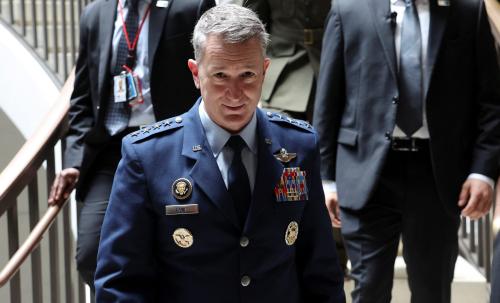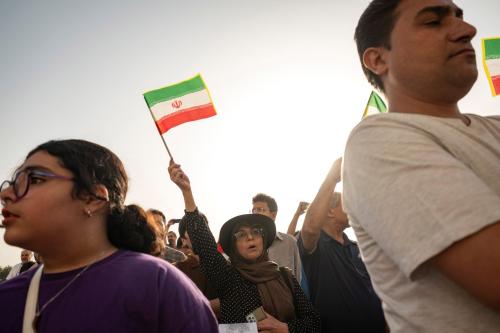Presidents Barack Obama and Dmitry Medvedev met in Prague one year ago, on April 8, 2010, to sign the New Strategic Arms Reduction Treaty (New START). One year later, the treaty—which requires each side to reduce to no more than 1,550 deployed strategic warheads on 700 deployed intercontinental ballistic missiles (ICBMs), submarine-launched ballistic missiles (SLBMs) and heavy bombers—has entered into force, and implementation has begun. So, what next?
After a surprisingly difficult debate, the U.S. Senate voted 71-26 on December 22 to consent to ratification of New START. The Russian parliament followed in January, and Secretary Hilary Clinton and Foreign Minister Sergey Lavrov exchanged instruments of ratification on February 5, bringing the treaty into force. Things are now happening.
In late March, the U.S. and Russian Nuclear Risk Reduction Centers made the first data exchange, as required by the treaty. Each side provided the other about 100 pages of data on its strategic forces. The data covers not only aggregate numbers of ICBMs, SLBMs, their launchers and heavy bombers on each side; it also includes the location and a unique identifier for every single one.
In March the sides began carrying out treaty exhibitions. The U.S. Air Force exhibited to a Russian team a B-1B bomber to demonstrate that the B-1B is not nuclear-capable (and thus will not count under the treaty’s limits), and Russia conducted an exhibition for a U.S. team of its new RS-24 ICBM, which will be limited by the treaty. At the end of March, the Bilateral Consultative Commission—the body established to discuss treaty implementation questions—held its first session in Geneva. As of April 5, the sides are also able to begin conducting treaty inspections (each can conduct up to 18 per year).
As implementation proceeds, the question now is: how should the United States and Russia move forward on next steps? Writing in the April 6 International Herald Tribune, former Secretary of State Madeleine Albright and former Russian Foreign Minister Igor Ivanov called for early negotiations to further reduce U.S. and Russian strategic nuclear forces down to 1,000 deployed strategic warheads. That would set an achievable near-term target. New START allows seven years to reach its limits of 1,550 deployed warheads and 700 deployed delivery systems; Albright and Ivanov suggested the sides accelerate reductions and implement them within three-four years. They also recommended beginning to deal with non-strategic (tactical) nuclear weapons. Speaking on March 29, National Security Advisor Tom Donilon called for increasing transparency on the “numbers, locations and types of non-strategic forces in Europe” as a first step.
Obama stated last year that the next round of talks should include non-deployed strategic warheads and non-strategic nuclear weapons along with deployed strategic forces. That would mean, for the first time, U.S.-Russian negotiations on all their nuclear warheads. Applying a single limit to all nuclear warheads with a sublimit on deployed strategic warheads would be a sensible approach for the next round of negotiations.
It is not clear, however, how quickly those negotiations will begin. Moscow appears hesitant. Russian officials have said that a list of other questions—which include missile defense, long-range precision-guided conventional strike weapons and conventional force limits in Europe, among others—should be dealt with first. These are serious questions, but a sequential approach could mean a long delay in new nuclear arms talks. It would be better to tackle these questions in parallel. The sides negotiate on the basis of “nothing is agreed until everything is agreed.” If the nuclear arms talks were to come close to a new treaty and one side had a problem on some other question, it could always hold up the treaty. Negotiating a new agreement will take at least a couple of years; it makes no sense to hold up beginning the negotiations.
The Brookings Institution is committed to quality, independence, and impact.
We are supported by a diverse array of funders. In line with our values and policies, each Brookings publication represents the sole views of its author(s).



Commentary
One Year after New START’s Signature
April 8, 2011